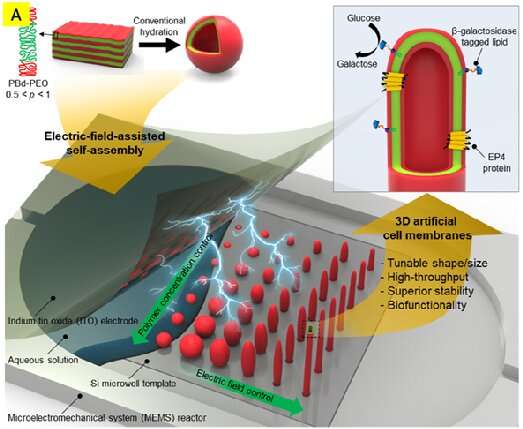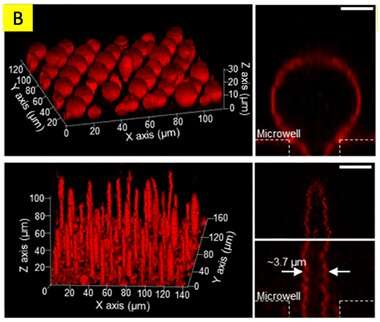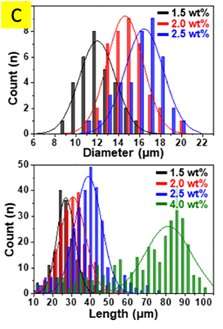Extending the lifespan of artificial cell membranes from five days to almost two months

The cell membrane, which contains a hydrophilic exterior and a hydrophobic interior, opens and closes ion channels like a water faucet and converts a physicochemical stimulus into an electrical signal that is then transmitted to cells. Until recently, the limited ability of an artificial cell membrane structure to only last a maximum of five days has been a hurdle.
The Korea Institute of Science and Technology (KIST, President Seok-Jin Yoon) announced that the research team led by Dr. Tae Song Kim of the Brain Science Institute has succeeded in developing an artificial cell membrane that can be kept stable for over 50 days on a silicon substrate. This is the longest time reported in the field. In addition to creating, in 2018, an artificial cell membrane lasting for five days, Dr. Kim's team demonstrated in 2019 the transfer of a positive ion to the inside of a structure with an artificial cell membrane with a protein attached to the surface, confirming its biosensor application potential.
However, durability of at least one month is essential for life science research utilizing artificial cell membranes and the practical commercialization of biosensors. To extend the limit of five days of stability of an artificial cell membrane, the KIST research team focused on a material called block copolymer (BCP). A BCP is a macromolecule consisting of two or more blocks, which can be repeatedly aligned as a long row of blocks of counteracting properties that mimic the hydrophilic and hydrophobic nature of the human cell membrane.

Dr. Kim's research team developed a technology that regularly arranges tens of thousands of holes with a diameter of 8 μm on a silicon substrate and inserts a specific amount of BCP solution into each hole through surface treatment, and dries it. Then, a soap bubble-shaped, an elongated oval-shaped, or a thin tubular-shaped BCP double-layer structure is tunably created by applying an electric field between the upper plate electrode of the microfluidic channel and the lower silicon substrate. This process led to the discovery of the possibility of maintaining a structure with a specific shape depending on the concentration of the solution and the applied electric field and frequency. This suggests a means to freely control the size and shape of artificial cell membranes, from a sphere, like a soap bubble, to a cylinder, like a tube.
The KIST research team finally created an artificial cell membrane that can be kept stable for over 50 days by filling the outside of a three-dimensional double-layered BCP structure with a porous hydrogel that exhibits excellent elasticity and resilience characteristics similar to that of a human body substance. In addition, an artificial organ structure was produced by replicating an epithelial cell in the small intestine, which consists of thousands of tubular structures (cilia) using a BCP double-layered structure, proving its usage potential as a material for artificial organs through binding with β-galactosidase.

Dr. Kim says that "while global research on artificial cell membranes has been focusing on placing a two-dimensional planar structure on a silicon substrate, the team has succeeded in extending the stability period of an artificial cell membrane by more than ten times following the development of the first three-dimensional artificial cell membrane structure fabrication technology. The research, which has presented a path for large area array fabrication of artificial cell membranes, is expected to further develop into a platform technology for biological functionality research that identifies the roles of ultra-sensitive biosensors resembling cell functions, drug screening for new drug development, and neurotransmitters and hormones in the brain."
The research was published in Nature Communications.
More information: Dong-Hyun Kang et al, Tunable and scalable fabrication of block copolymer-based 3D polymorphic artificial cell membrane array, Nature Communications (2022). DOI: 10.1038/s41467-022-28960-y
Journal information: Nature Communications
Provided by National Research Council of Science & Technology


















